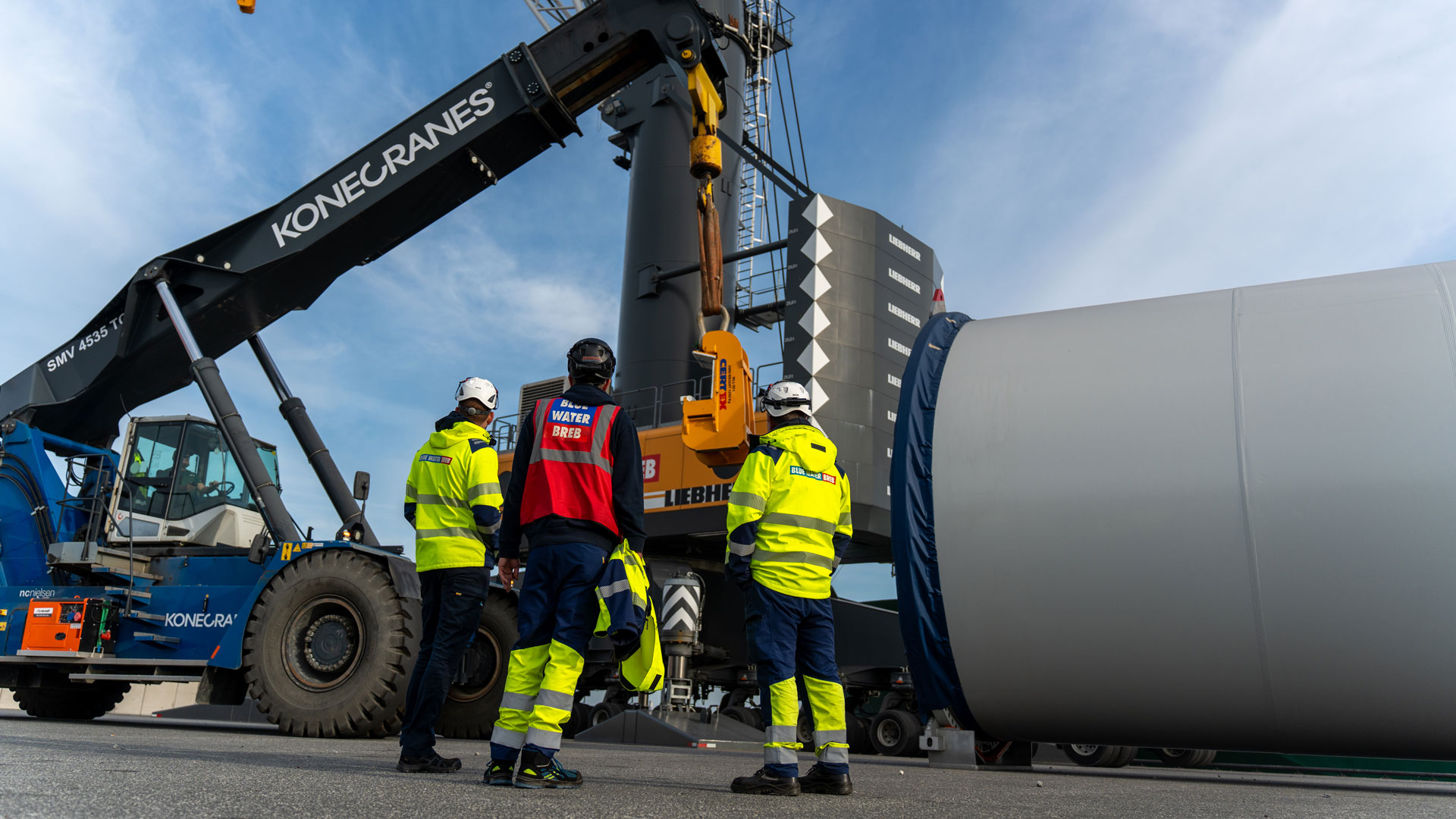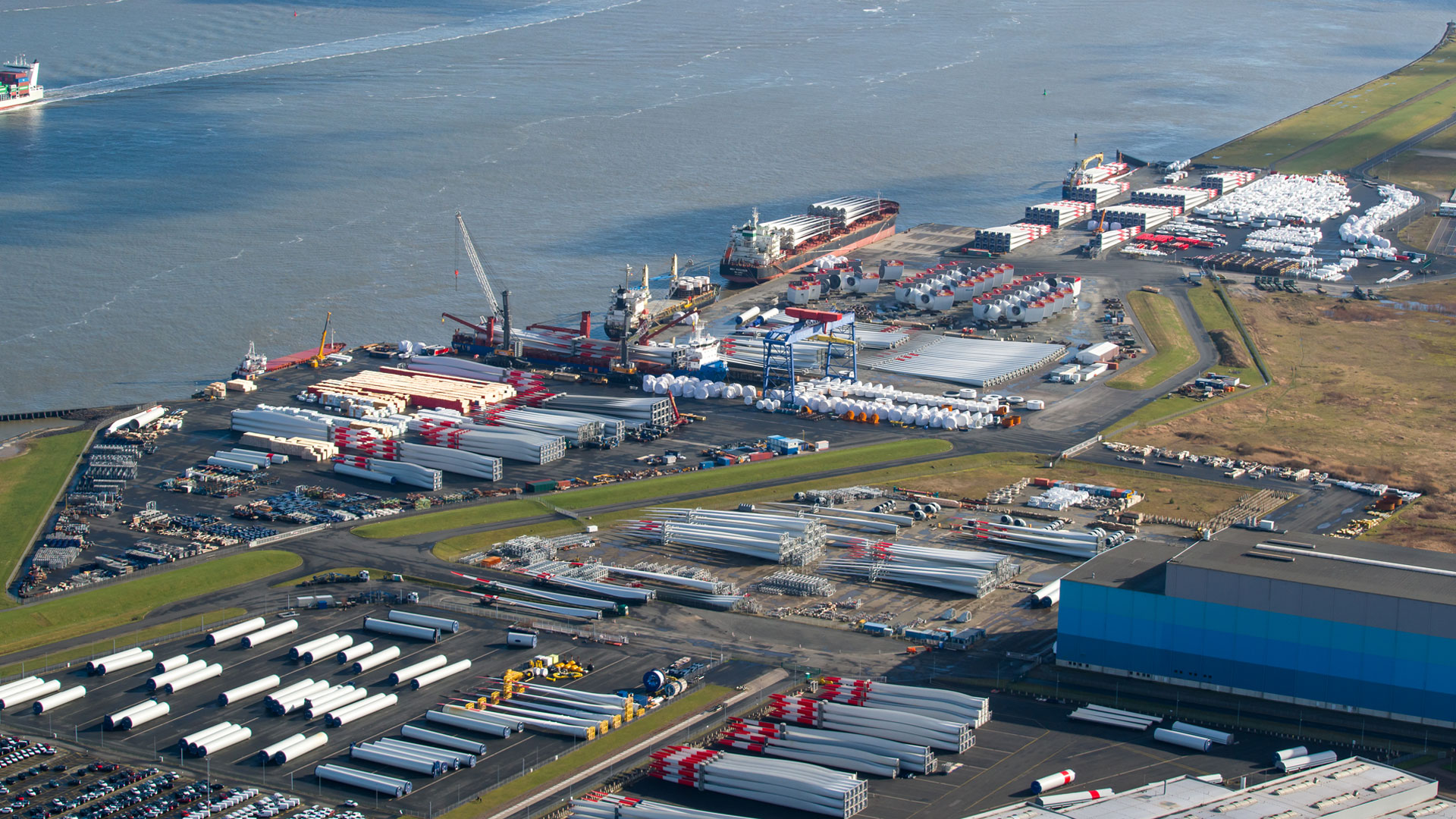Energy transition offers great opportunities for Port…
In this interview, Dr Melanie Leonhard, Senator for Economics and Innovation, explains how the Port of Hamburg intends to position itself ...

Cuxhaven stands out as Germany's largest and most significant wind energy port, playing a pivotal role in the nation's energy transition. Its influential position in shaping the energy transition is underscored by its establishment as a hub for production and installation long before the onset of the energy crisis. Additionally, Cuxhaven holds a crucial role as the foremost import port for onshore wind turbines, contributing significantly to Germany's ongoing energy transition.
The presence of major players such as Siemens Gamesa Renewable Energy, Titan Wind Energy, and Nordmark has solidified Cuxhaven's reputation, leading to its recognition as the 'German Offshore Industry Centre - DOIZ'. Enercon, Nordex, and Vestas, key wind industry companies, also utilize Cuxhaven for the transshipment of their components. The German Offshore Industry Centre, situated on a 450-hectare site along the banks of the River Elbe, boasts offshore and heavy lift terminals, a versatile harbor, storage and logistics areas for heavy goods, RoRo ramps, three mobile harbor cranes (LHM 600, LHM 550, and LHM 400), and a 500-tonne portal crane. Handling 4,500 wind turbine components annually, the port is hailed as a green power plant and serves as the gateway to the North Sea.
With the German government laying the groundwork for offshore wind energy expansion through the Offshore Wind Energy Act, Cuxhaven is poised to become the leading offshore base port on the North Sea coast. Its strategic location enables the construction and supply of offshore wind farms, further solidifying its position in the forefront of the evolving energy landscape.
Marc Itgen, Head of the Economic Development Agency of the City of Cuxhaven, expresses optimism about the port's potential with the extension of berths 5 to 7 and the planned expansion of the port into hinterland sites near the port. He notes, "Once this gap has been closed, almost four kilometres of quay will be available for the large and heavy parts of wind turbines." The eastern expansion area is already developed, and plans for a new heavy-duty bridge over the railway tracks are underway, solidifying Cuxhaven's position as Germany's primary location for handling wind turbine components.
The state government of Lower Saxony, as outlined in its coalition agreement, intends to support the expansion project for berths 5 to 7. It has committed to covering one-third of the approximately €300 million project cost. The port industry will contribute another third, with hopes that the federal government will provide the remaining third. Itgen emphasizes, "We are talking about 100 million euros, which is a substantial amount, but it is a worthwhile investment in terms of the energy transition." There is a collective hope for increased responsibility and prompt action from the federal government. Itgen emphasizes the need to "think a bit bigger here," stressing that the renewable energy sector, particularly wind energy, is undeniably a key industry in the economic region.

"In the last 15 years, Cuxhaven has dedicated substantial investments to expanding its port and now seeks political support from the state and government. Over the next few years, approximately 500 million Euros will need to be invested in Cuxhaven's infrastructure," emphasizes Uwe Santjer, the Lord Mayor of Cuxhaven. The additional berth spaces will enhance the productivity and attractiveness of the base port for both offshore and onshore wind energy projects. By 2030, the installed offshore wind energy capacity is expected to surge from the current 8.3 gigawatts to at least 30 gigawatts, reaching 40 gigawatts by 2035, and an ambitious target of 70 gigawatts by 2045. "Without the necessary space, we will be unable to meet our expansion goals or effectively navigate the energy transition," adds Itgen.
The Port has a key
function in Germany's
energy transition.
The foundations of modern wind turbines, composed of steel and concrete, weigh 2,500 tonnes, measure approximately 140 meters in length, and boast a diameter exceeding ten meters. As a result, it is imperative to have suitable storage areas for pre-storing components like rotor blades, tower segments, or nacelles. Additionally, ample maneuvering and storage spaces within the port area are essential for the efficient handling and storage of these components. The building permit for expanding berths 5 to 7 has been in effect since 2020, and planning permission has been granted, paving the way for the commencement of the project.
This investment is poised to provide a significant boost to the region. "We want to establish industry where there is energy," affirms Itgen. Already, in terms of employment, Cuxhaven generates an added value of 30 to 40 million euros solely from the offshore industry, benefiting both the city and the region within an hour's drive from the hinterland. Speaking of the hinterland, the port is directly linked to the A27 motorway via a roundabout. To enhance the port's supply chain and promote sustainability in transportation, plans include extending, electrifying, and upgrading the Cuxhaven-Stade-Hamburg railway line with a second track for higher speeds.